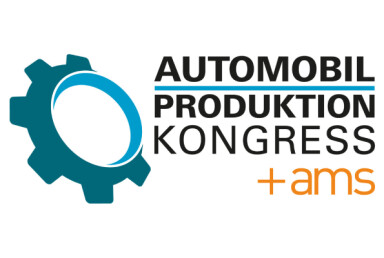Analysis: JLR & Production Resilience
JLR Cyberattack: UK's costliest ($2.5bn) breach further exposes production fragility

Independent analysts say the attack on Jaguar Land Rover has caused unprecedented damage to Britain's automotive sector, with recovery not expected until early 2026 as supply chain impacts deepen across 5,000 tier suppliers and companies.
When hackers infiltrated Jaguar Land Rover's (JLR) systems in late August, they did more than disable computers. They triggered what independent analysts now describe as the most financially devastating cyber event in British history. The Cyber Monitoring Centre (CMC) estimates the attack will cost £1.9bn ($2.5bn), dwarfing previous incidents and exposing the harsh realities of the fragility of modern vehicle manufacturing.
The scale is staggering. The attack forced a minimum five-week production shutdown at JLR's three major UK plants in Solihull, Halewood and Wolverhampton, halting the manufacture of approximately 1,000 vehicles daily. But the damage radiates far beyond the carmaker itself. Some 5,000 businesses have been affected, most of them small and medium-sized tier-suppliers woven into JLR's vast production network. Full recovery, the CMC warns, will not arrive until January 2026.

Ciaran Martin, chair of the CMC's technical committee and former chief executive of the National Cyber Security Centre, frames the incident in stark terms. "With a cost of nearly £2bn, this incident looks to have been by some distance, the single most financially damaging cyber event ever to hit the UK," he says. "That should make us all pause and think. Every organisation needs to identify the networks that matter to them, and how to protect them better, and then plan for how they'd cope if the network gets disrupted."
The CMC has classified the incident as a Category 3 systemic event on its five-point scale, where Category 5 represents the most severe. This marks the first time a single company has triggered such widespread economic damage through a cyber breach. Previous retail attacks on Marks & Spencer and Co-op, also claimed by similar hacking groups, were estimated to cost between £270m and £440m combined, a fraction of the JLR impact. A stark reminder that automotive production sits at the precipice of global economic activity, and consequently requires the most robust cybersecurity protection.
The cost of interconnection
More than half the estimated £1.9bn will be borne by JLR itself, including lost earnings and recovery expenses. The remainder cascades through the supply chain, affecting component manufacturers, logistics providers and local economies dependent on automotive production. The West Midlands, home to much of JLR's supplier base, faces particular strain. Reports emerged of smaller suppliers laying off workers, some reducing their workforce by nearly half. A microcosm: one supplier reportedly dismissed 40 employees, almost 50 per cent of its staff, as orders evaporated.
The human dimension extends beyond redundancies. Around 120,000 jobs across JLR's UK supply chain depend on the carmaker's operations. During the shutdown, workers faced reduced hours, deferred payments and uncertainty about long-term employment. Local businesses serving factory communities, from cafes to transport services, saw revenue collapse as production lines fell silent.

The UK government responded with a £1.5bn loan guarantee through the Export Development Guarantee scheme, underwritten by UK Export Finance. The five-year facility aims to bolster JLR's cash reserves so the carmaker can support struggling suppliers. Business Secretary Peter Kyle described the attack as an assault not merely on an iconic brand but on Britain's automotive sector and the livelihoods depending on it. Chancellor Rachel Reeves called JLR a jewel in the crown of the UK economy, emphasising the package would protect tens of thousands of jobs directly and indirectly linked to the manufacturer.
Hackers and production cybersecurity: The attribution question
Shortly after the breach became public on 2 September, a group calling itself Scattered Lapsus$ Hunters claimed responsibility on messaging platform Telegram. The collective's name merges three notorious English-speaking hacking groups: Scattered Spider, Lapsus$ and ShinyHunters. The same coalition claimed earlier attacks on M&S, Co-op and Harrods, causing severe disruption to British retail.
Scattered Spider comprises loosely affiliated, often young hackers who use social engineering, phishing and credential theft to penetrate corporate systems. The group posted screenshots purporting to show JLR's internal IT networks, including domain information and backend system details. Security researchers believe the hackers exploited a vulnerability in SAP NetWeaver, third-party software used by JLR, to gain access. The US Cybersecurity and Infrastructure Security Agency had warned about this flaw earlier in the year, though it remains unclear whether JLR had applied available updates.
JLR has not officially confirmed which group carried out the attack or disclosed the full nature of the breach. The carmaker initially stated there was no evidence customer data had been stolen, but later acknowledged that some data was compromised. Whether the attack involved ransomware, which encrypts systems until a ransom is paid, or a more destructive wiper attack, which permanently destroys data, remains undisclosed.
The CMC notes that ransomware attacks are generally easier to recover from than wiper attacks, and its cost estimates do not account for any potential ransom payment, which could reach tens of millions.

In mid-September, the Scattered Lapsus$ Hunters group announced it would cease operations, claiming it was activating contingency plans and going quiet. Security experts expressed scepticism, noting that cybercriminal groups rarely retire genuinely.
Cynthia Kaiser, senior vice president of Halcyon's Ransomware Research Centre and former deputy assistant director of the FBI's Cyber Division, described the announcement as a ham-handed attempt to reduce law enforcement scrutiny. The group hinted at future developments and taunted victims even as it claimed to wind down.
Vehicle manufacturing's digital Achilles heel
The JLR incident lays bare a fundamental tension in modern manufacturing. Factories have become showcases of connectivity, with production lines, supplier networks and enterprise software interwoven through digital systems. This integration drives efficiency but creates single points of failure. When hackers breached JLR's IT infrastructure, the carmaker had no way to isolate plants or functions. Most operations had to shut down simultaneously.
This vulnerability extends beyond targeted cyberattacks. Just days before the CMC published its JLR analysis, Amazon Web Services suffered a 15-hour outage on 20 October that disrupted cloud-dependent operations globally. Whilst automotive production escaped immediate, widespread shutdowns, the incident exposed identical fragilities. Just to take a couple of cases, Volkswagen's Digital Production Platform runs on AWS, connecting 43 facilities with over 1,200 AI-driven applications, while BMW has migrated data from business units in over 100 countries to the same infrastructure.
Then we have Mercedes-Benz, which operates its MO360 ecosystem on Microsoft Azure with similar dependencies. When cloud infrastructure fails - whether through malicious attack or technical failure - the result is the same. Connected manufacturing systems lose their nervous system.
This latest, JLR attack coincided with the UK's new plate day on 1 September, traditionally one of the year's busiest for vehicle registrations. Dealers could not register or deliver cars, compounding financial losses. JLR's interconnected systems, spanning production scheduling, supplier ordering and retail operations, amplified the damage. The OEM employs approximately 34,000 people directly in the UK and sits atop a supply chain supporting around 200,000 jobs nationwide.
What this incident demonstrates is how a cyber attack on a single major manufacturer can cascade through thousands of businesses, disrupting suppliers, transport and local economies, and triggering billions in losses across the UK economy
Security specialists warn that JLR's experience should serve as a wake-up call for manufacturers. Automotive cyber resilience requires much more than simple firewalls and antivirus software. It demands segmented systems, backup processes for critical functions, stress-tested supplier networks and contingency planning for scenarios where core IT infrastructure fails, and contracts with suppliers should establish clear security standards, audit rights and disaster recovery protocols.
Will Mayes, chief executive of the Cyber Monitoring Centre, emphasises the cascading nature of such attacks. "What this incident demonstrates is how a cyber attack on a single major manufacturer can cascade through thousands of businesses, disrupting suppliers, transport and local economies, and triggering billions in losses across the UK economy," he says. The CMC's role, he adds, is to provide independent, evidence-based analysis that boards, insurers and policymakers need to make informed decisions about resilience and risk.
Lessons from the wreckage
The CMC's analysis assumes JLR will not draw on the government loan guarantee for its own use, but the facility provides crucial liquidity for suppliers. How quickly that support reaches firms on the brink remains a pressing question. Industry groups have warned that many smaller suppliers operate with thin margins and limited cash reserves, making them vulnerable to prolonged disruptions.
The JLR cyberattack is a case study in systemic risk. It demonstrates how interconnected modern economies have become and how a single breach can ripple through thousands of firms. The cost, measured in billions, reflects not just lost production but delayed orders, unpaid invoices, redundancies and shuttered businesses. The incident also highlights the inadequacy of treating cybersecurity as someone else's problem. Suppliers, manufacturers and policymakers must recognise that resilience is built through preparation, investment and collaboration, not hope.
As Ciara Martin observes, the attack should prompt organisations to act. Every automotive producer must identify critical networks, protect them better and plan for disruption. The time for complacency has passed. The JLR breach, alongside recent infrastructure failures affecting cloud-dependent manufacturing operations globally, has shown in stark financial terms what happens when digital systems fail. The question now is whether the lessons learned will translate into meaningful change before the next attack strikes. And no doubt, it will.





